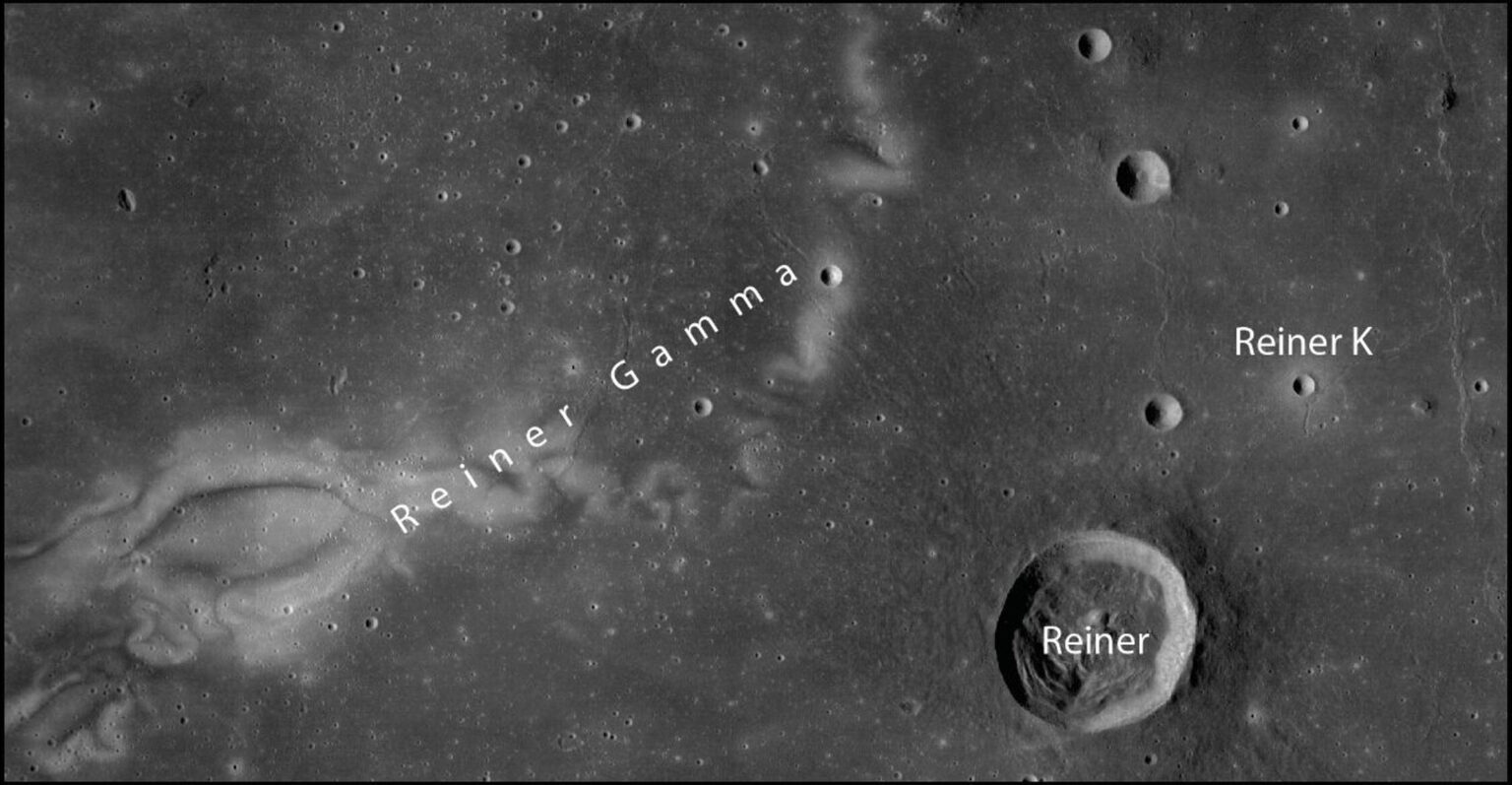Astronomers have found unique rocks on the Moon that are covered with a thick layer of light dust. Scientists suspect that they may be magnetic, and associate them with the formation of a strange structure known as Reiner Gamma.

Amazing rocks on the Moon
The moon is almost completely covered with dust. Unlike the Earth, this dust is not smoothed by wind and weather, but has sharp edges and is also electrostatically charged. It has been studied since the Apollo missions in the late 1960s. Now, an international research team led by Dr. Ottaviano Rüsch from the University of Munster has discovered for the first time on the surface of our moon anomalous rocks of meter size that are covered with small particles. They may have unique properties, such as being magnetic.
The most important conclusion of scientists is that only a few boulders on the Moon have a layer of dust with very special reflective properties. They are clearly visible due to the fact that they reflect sunlight differently and therefore look lighter. These new findings help scientists understand the processes that form and change the crust on our moon.
Magnetic anomalies
It is known that there are magnetic anomalies on the surface of the Moon, especially near the area called Reiner Gamma. However, until now, the question of whether rocks can be magnetic has never been investigated.
To study this question, astronomers for the first time investigated the interaction of dust with rocks in the Reiner Gamma region — more precisely, variations in their reflective properties. For example, we can conclude to what extent and in which direction sunlight is reflected from these large rocks. The images were taken by NASA’s Lunar Reconnaissance Orbiter spacecraft, which orbits the Moon.
The research group was initially interested in cracked rocks. For the first time, they used artificial intelligence to search for cracks in about a million images. The search algorithm found about 130,000 interesting rocks, half of which scientists have carefully studied.
“For the first time, we have investigated the interactions of dust with rocks in the Reiner Gamma region—more precisely, the variations in the reflective properties of these rocks. For example, we can deduce to what extent and in which direction the sunlight is reflected by these large rocks,” explains Rüsch.
The need for lunar dust research
This is an exciting discovery — however, scientists are still in the early stages of understanding the properties of this dust and its interaction with the rock. In the coming weeks and months, scientists want to continue investigating the processes that lead to the interaction of dust with rocks. These processes include, for example, the rise of dust due to electrostatic charge or the interaction of the solar wind with local magnetic fields.
Among the many unmanned missions to the moon, NASA will send an automated lunar rover to the Reiner Gamma region in the coming years to find similar types of boulders with special dust. Even if it is still a dream of the future, a better understanding of the movement of dust can help, for example, in planning human settlements on the Moon. After all, from the experience of the Apollo astronauts, we know that dust creates many problems, such as pollution of the habitat and technical equipment.
According to phys.org
Follow us on Twitter to get the most interesting space news in time
https://twitter.com/ust_magazine


